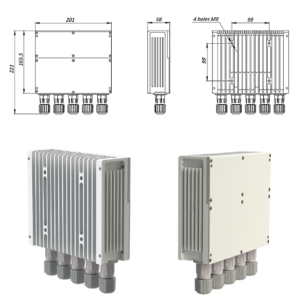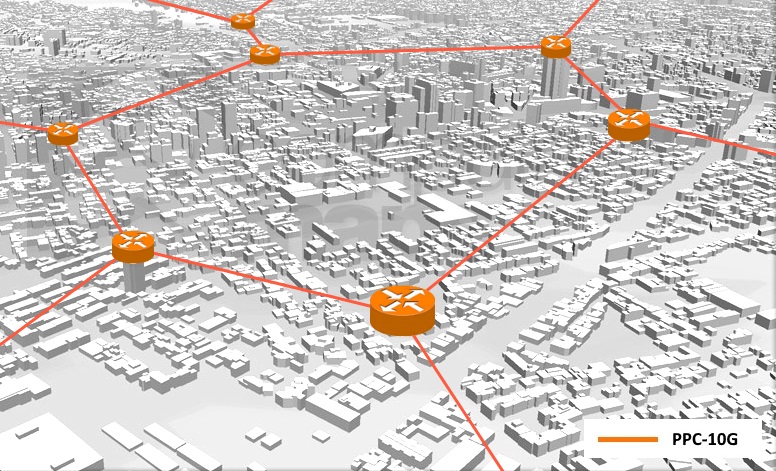ElVA-1 offers 10 to 40 Gbps 70-80 GHz radios for urban backhaul and 10Gbps 60 GHz radios for last-mile mesh network. This dual-band topology provides high network throughput and reliability.
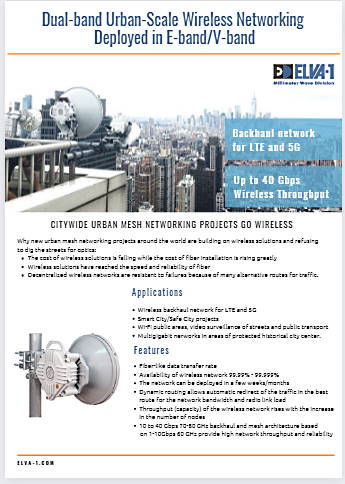
Fiber optics, with all the advantages in the form of cable reliability, has many disadvantages. These are a long deployment time, an extremely high cost of laying a cable, a lack of flexibility in the solution, a difficult procedure for restoring communication when a cable breaks.
The question of choosing between “optics or radio links”, as always, lies in the profitability of projects. And here the network on radio links is already outperforming FTTH (Fiber-to-the-home). In fact, the city-scale mesh networks copy the principle of building the Internet, therefore they have reliability of up to 5 nines.
Click to download the ELVA-1 Dual-band Urban-Scale Wireless Networking booklet.
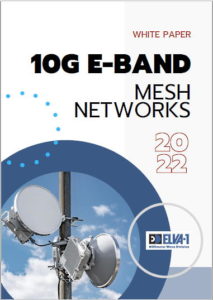 Download our E-band mesh network White Paper.
Download our E-band mesh network White Paper. Wireless broadband and mesh network replicates the principle of the early Internet, where each node has redundant paths for traffic
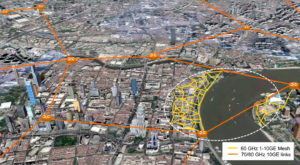
Latest urban mesh networking projects around the world are building on wireless solutions and refusing to dig the streets for optics:
- The cost of wireless solutions is falling while the cost of fiber installation is rising greatly
- Wireless solutions have reached the speed and reliability of fiber
- Decentralized wireless networks are resistant to failures because of many alternative routes for traffic.
Urban wireless mesh networking features and benefits:
- Backbone 70-80 GHz network for the deployment of digital services for Safe City/Smart City,
- At the edge of the cell length of 3 km, the availability could be up to 99.99%,
- Access of local businesses and households to high-speed Internet,
- Wireless connection of industrial zones,
- The basis for mesh networks of the 60 GHz band (to cover public spaces and urban transport with Wi-Fi zones and transit traffic for 5G base stations.
The Dual-band Urban-Scale Wireless Network could be built as a composition of large-cell structure based on point-to-point E-band PPC-10G radios with capacity of 10 or 20 Gbps (10+10), with aggregation up to 40 Gbps. It acts as a wireless transport backbone or in addition to optical wires in terms of coverage of the city territory by connection points (PoP, Point of Presence). The capacity of the connection at Point of Presence (PoP) would be not less than 10 Gbps. Business clients and apartment building networks can be connected to backbone POPs by optical cable, twisted pair or ELVA-1 full-duplex 60 GHz short-range terminals. The 60 GHz terminals are carrier-grade, have 1-10 Gbps Full Duplex throughput, and operate without using 802.11 protocol (not Wi-Fi).
Topology of the mesh network 70/80 GHz is assumed in the form of hexagons with sides from 3 to 5 km or with a side of less length, depending on the classification of the geographical area according to the rain zones of ITU, International Telecommunication Union. Depending on the terrain landscape, built-up conditions and availability of consumers, there may be other forms of cell topology in some areas, including single links to feed traffic to a specific area in point-to-point mode. The maximum length of the sides of point-to-point is up to 10 km (up to 15 km in the dry climate areas).
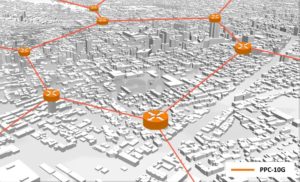 |

|
Wireless urban-scale networks with up to 99.999% availability based on 10 Gbps mm-wave radios have tens of times lower deployment costs than similar capacity optical networks.
The advantage of a mesh backbone network is that it is resilient to failures on each individual line. This is achieved by network self-organization and dynamic routing. If a particular radiolink fails or the capacity of an individual link is saturated, the system itself recognizes this fact and starts traffic on an alternate route.
Large cells of 70/80 GHz network allow to cover the city with broadband wireless backbones with a relatively small number of radios used. At detailed elaboration of the project the number of E-band radios can be further reduced, because some connections on the borders of the city can not be mounted if there are no enough clients there.
The resilience of the network to possible failures of individual radiolinks is ensured by redundant traffic paths:
- With three PPCs in each cell node, availability of 99.99% to 99.999% is ensured;
- Network resilience to failures grows as the number of cells increases, due to the emergence of redundant routes for traffic;
- The 10Gbps 70/80GHz RCS-based network is resilient to heavy rain, as the cell sides diverge in different directions and are longer than a typical rain front of a torrential rainfall type. Drizzle and snow of any intensity does not practically hinder operation of the 70/80 GHz radios.
60 GHz 10 Gbps terminals with automatic antenna scanning
The transport basis for the creation of Wi-Fi zones in public places (in the future – 5G zones) can be Terragraph-like short-range mesh networks. Terminals could be located on lighting poles, buildings and other local structures. In terms of providing Internet access for households and small offices, 60 GHz mesh networks look promising because of the low cost of equipment and the short time required to deploy the network.
